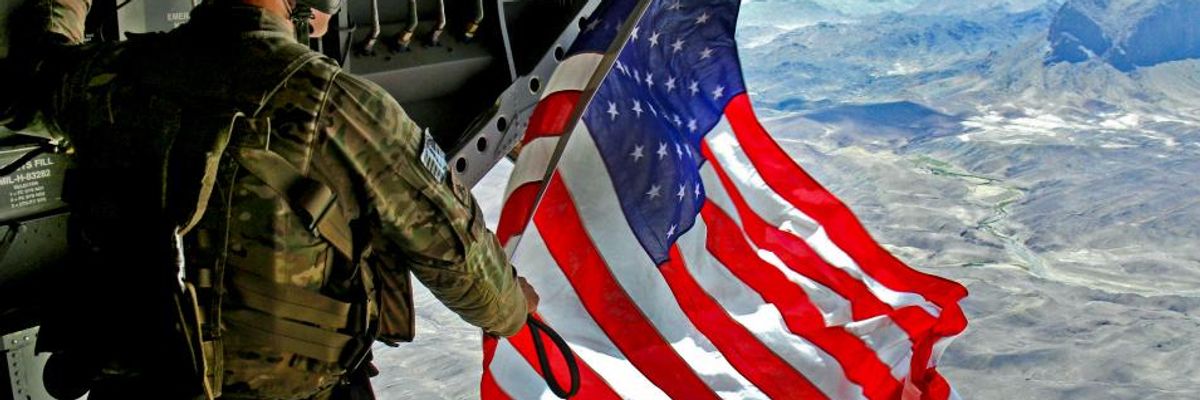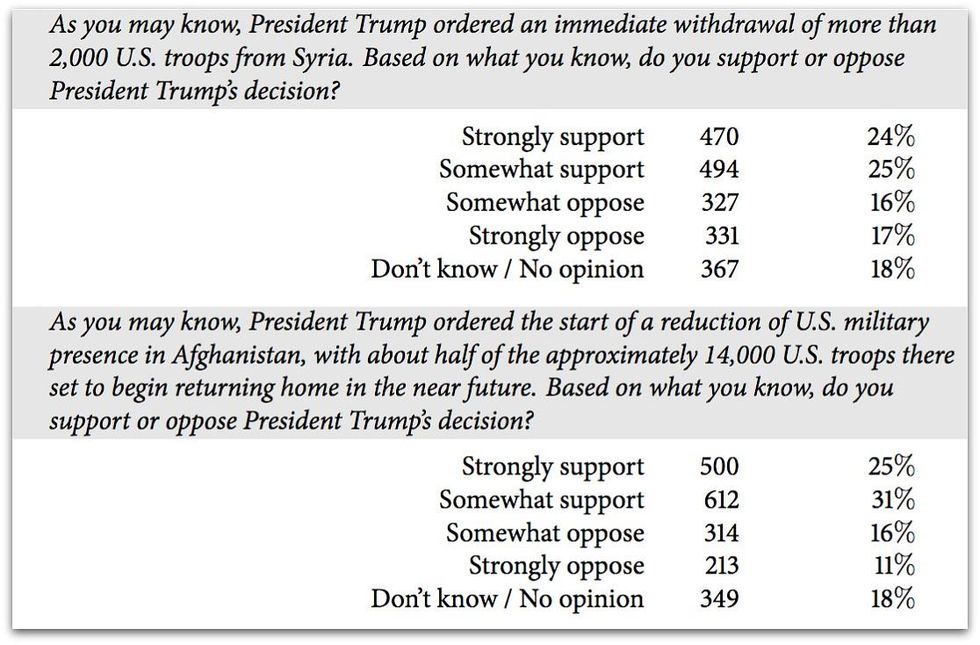While President Donald Trump is by no means an anti-war president, new polling shows that the American people are ready to see significant numbers of U.S. troops come home from foreign war zones that have existed for years, if not decades.
Peace advocates celebrated reporting last month that Trump wanted to imminently withdraw troops from Syria and cut those deployed to Afghanistan by half, and a Politico/Morning Consult poll (pdf) demonstrates a large portion of Americans agree, even as military leaders and warhawks in both major political parties continue to raise alarm about scaling back U.S. military occupation or operations in those nations.
The poll found that more than half (56 percent) of those surveyed--at least "based on what [they] know"--support Trump's recent order to bring home about half of the troops in Afghanistan, or about 7,000 people, "in the near future," compared with 27 percent who oppose it.
Although support for an immediate withdrawal of the more than 2,000 troops in Syria is a bit lower, a plurality of 48 percent back that plan--again, based on what they understand about it--versus the 35 percent who oppose it.
Additionally, a plurality of 49 percent agree that "the U.S. has been engaged in too many military conflicts in places such as Syria, Iraq, and Afghanistan for too long, and should prioritize getting Americans out of harm's way," compared with 33 percent who say that "the U.S. needs to keep troops in places such as Syria, Iraq, and Afghanistan to help support our allies, fight terrorism, and maintain our foreign policy interests in the region." The remaining 17 percent have no opinion.
On the military front, however, the Washington Post reported Tuesday that officials are "drafting plans to withdraw a few thousand troops from Afghanistan while continuing all major missions in the longest war in American history," despite the president's demands for "a more drastic pullout."
As the Post detailed, citing several unnamed sources:
Military advisers have convinced him that a smaller, and slower, withdrawal is best for now--although officials cautioned that a final decision had not been reached and that the president could order a full pullout at any moment.
"Trust me, he's heard every single argument on Afghanistan he could hear," one administration official said, adding that the president continues to complain that many of his advisers want him to stay in "all these wars forever."
Several officials who described the plan were hesitant to name a specific number, citing the evolving nature of the discussions. But some said it could be about half of what Trump was initially seeking.
Meanwhile, in Syria, Trump's desire for withdrawal has been complicated by concerns about how a rapid American exit could impact the Kurds.
On Tuesday, the president's plans for bringing home all troops from Syria "fell into further disarray," the New York Times reported, after Turkish President Recep Tayyip Erdogan refused to meet with Trump National Security Adviser John Bolton and "angrily dismissed his demand that Turkey agree to protect America's Kurdish allies" who fought with American troops against ISIS.
Those developments followed Turkey's outrage last week over U.S. Secretary of State Mike Pompeo's comments to the right-wing media outlet Newsmax. Pompeo said, according to a State Department transcript, that "ensuring that the Turks don't slaughter the Kurds" was part "of the American mission set."
But even if the Trump administration somehow finds a way to live up to public demands for bringing troops home from Afghanistan and Syria, there are dozens of other places where they will still be deployed. In fact, according to researchers from Brown University's Costs of War Project at the Watson Institute for International and Public Affairs, since former President George W. Bush launched the so-called War on Terror nearly two decades ago, Americans are now "actively engaged in countering terrorism in 80 nations on six continents," or 40 percent of all countries on Earth.




